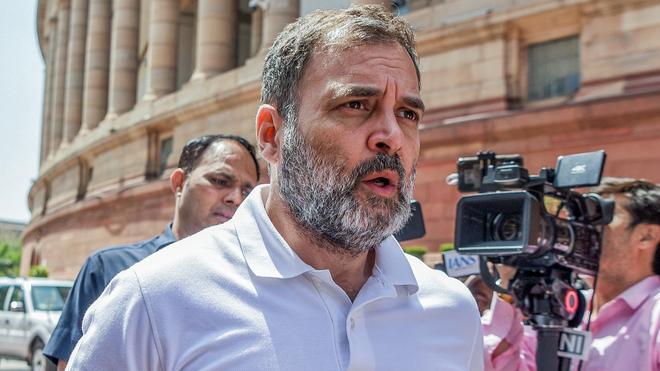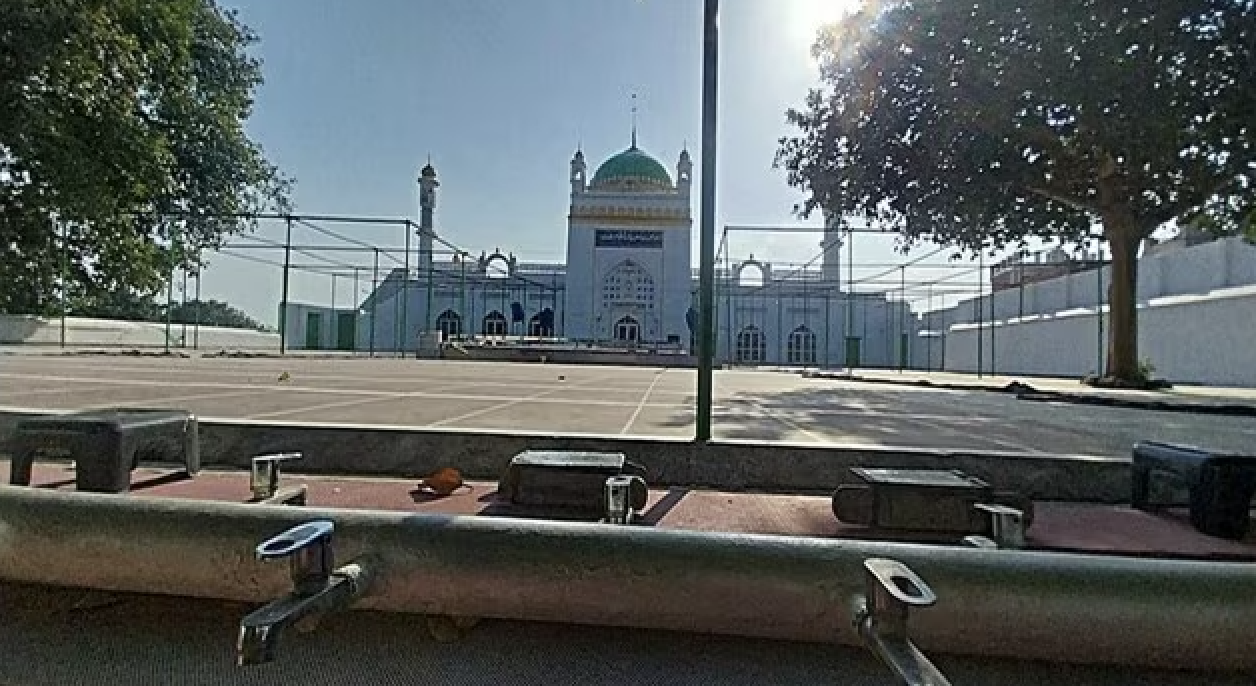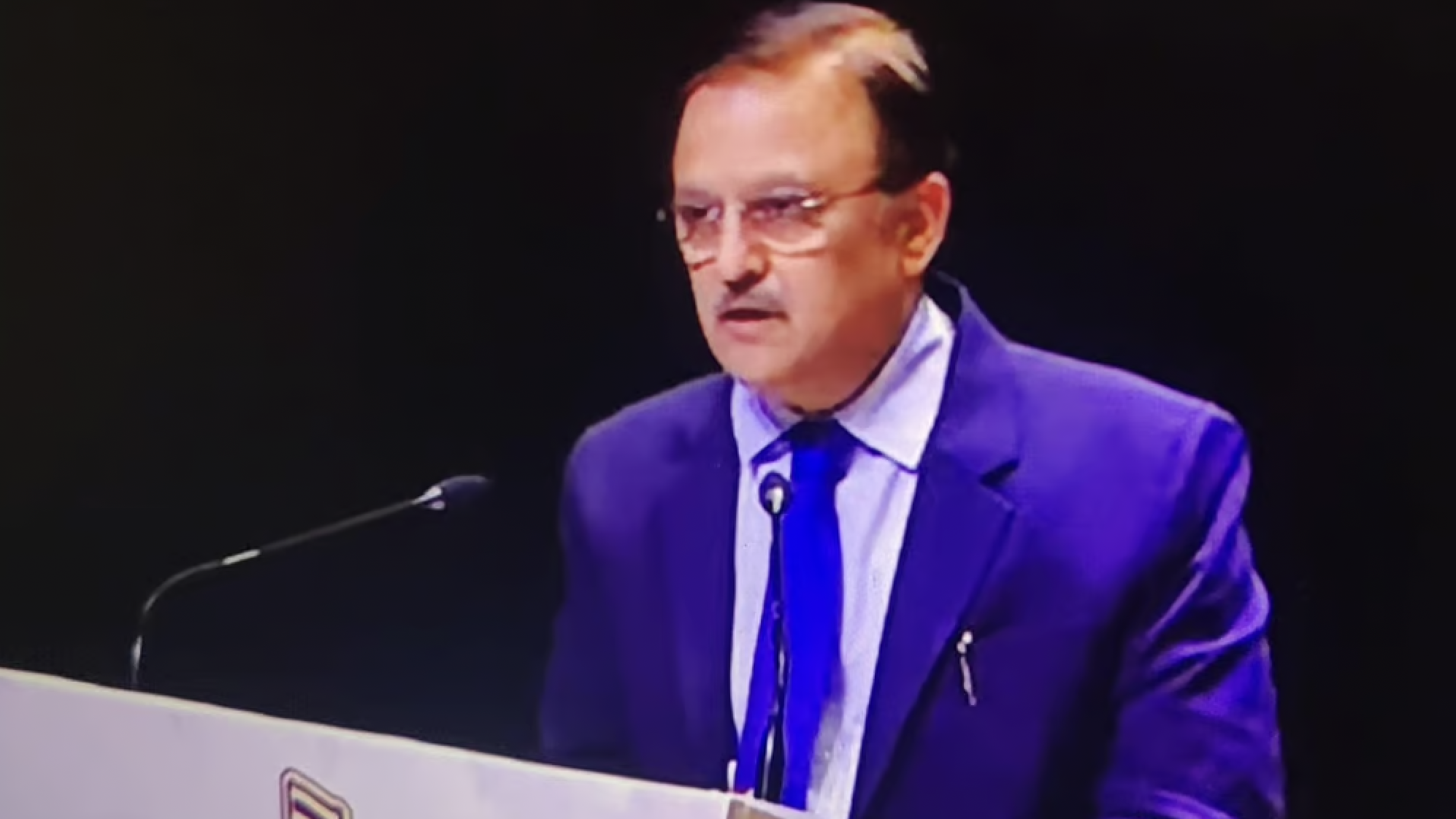
A multitude of images featuring the prime minister, Narendra Modi, routinely emanates from the digital and print platforms of the ruling Hindu right in India. In some of these, Modi strikes a majestic stance against a backdrop of gleaming bridges, roads, or high-rise buildings, his benevolent gaze meeting the viewer’s own. Though seemingly banal, these images offer a way for Modi’s followers to experience his visual presence as a devotee might. Indeed, both Modi’s supporters and detractors often invoke the language of bhakti, a rich and complex tradition of spiritual discipline and devotion, to describe his followers’ faith in him. In keeping with bhakti practices of visuality, the viewers of these images might accrue some of Modi’s visionary power and see what he envisions for the nation. They may also see themselves in what he shows behind him, for conjoined with devotion to Modi’s person is a desire for the glossy horizon that frames these images. Here lies capitalist modernity’s promised land––a dream both deferred and, at least in the hyperreal zone of the virtual world, also realized in the here and now.
The phenomenon of political bhakti is illustrative of the main issues raised in this forum, which discusses the rise of the global far right from the vantage point of Hindutva. Although one could certainly argue that there is something religious about Modi-bhakti, the nature of this religiosity is not reducible solely to Hindu devotion as conventionally understood, or even to Hindu nationalist mobilization. Indeed, the broader context animating this type of bhakti today lies both within and beyond the Indian subcontinent. The ideology of Hindutva and the large paramilitary organization supplying many of the Hindu right’s foot soldiers are about a century old, with their own distinctive history. However, the manifestations of the Hindu nation under Modi resonate at least partially with other contemporary hyper-nationalist and authoritarian projects, whether in Hungary, Turkey, Brazil, the United States, or elsewhere.
Like white nationalism, Hindutva spills over national borders. Indeed, the two movements share more than a mere resemblance; they have an affinity based on concrete links. For example, both Modi and Donald Trump showcased their mutual rapport to garner support from voter blocs in India and the United States respectively. Hindutva thus offers an illuminating vantage point for viewing the current global democratic backslide as a convergence of majoritarian movements that bear similarities and overlap. Linking these authoritarian projects, as scholars such as Prabhat Patnaik and Ravinder Kaur persuasively demonstrate, is the shared framework of a globalized neoliberal order. In this regard, Nitasha Kaul shows how the hyper-nationalism of Hindutva can act as both neoliberalism’s ally (rather than, as is often thought, being opposed to it) and also a salve for neoliberalism’s discontents. Seen in the global context, the entrenchment of Hindutva authoritarianism in India is hardly exceptional, although its consequences are grave.
One of the crowning achievements of present-day Hindutva is its capture of a wide social base of support for a liberatory vision of capitalist progress. With Modi, the ruling Bharatiya Janata Party abandoned its lip-service commitment to socialism, which, along with secularism, is enshrined in the Indian constitution. Modi came to power in 2014 promising to reshape the nation on the model of Gujarat––a state where he had served as chief minister and facilitated a ‘business-friendly’ (but not labor-friendly) climate. Now, his spokespersons and supporters regularly cite his grandiose plans to make India a “vishwaguru” (guru to the world) and a “$5 trillion economy,” aims that call for the strong guiding hand of an authoritarian leader.
Under Modi, who has seized a remarkable degree of centralized authority, bhakti has been reimagined as the affective ideal for citizens. Modi eschews press conferences but regularly delivers radio and television sermons broadcast across the nation and aired in classrooms. He galvanizes the public into performing an array of collective rituals ranging from yoga displays to banging on cookware, while recasting crises as shared sacrifice. Bhakti is thus the fitting expectation for a national community envisioned, in the words of Priya Chacko, as “virtuous market citizens,” whom the state now endows with more duties than rights.
Modi reflects what Philip Gorski identifies as a global phenomenon of the “god-king” in politics, as he deploys costume and spectacle to depict himself as a divine ruler who is both modern and nativist. Images of Modi visiting temples or meditating recall the archetype of the renunciate-king, the rajarshi, who fused temporal authority with spiritual power. Riding a campaign to demonize the premodern Muslim rulers of the subcontinent, Modi projects himself as the Hindu “emperor of hearts.” He offers his followers visions of both progress and a chance to wipe out the perceived wrongs of the past.
Accompanying the vision of a glorious Hindu nation is a politics of persecution, targeting a malleable category of “anti-national” groups and individuals who would stand in its way. Muslims, for the crime of going about their daily lives, endure brutal attacks and false accusations of endless forms of jihad––including ‘love jihad,’ for dating or marrying outside the community, and ‘economic jihad,’ for seeking to earn their livelihoods. All the while, violence against the caste-oppressed continues to rise. A range of intellectuals, social activists, and environmentalists have been imprisoned under draconian laws. With a largely conformist judiciary and a pliant media, there is little room for recourse against the executive.
A deleterious, though often overlooked, consequence of Hindutva as a national project is the acceleration of environmental degradation. As Janaki Bakhle observes, the foundational ideologue of Hindutva, Vinayak Savarkar, portrayed the nation as an “enchanted” geography constituting the homeland of a “mythic [Hindu] community.” Today, the Hindu right’s nativist and ostensibly anti-colonial program, which for its supporters is also imbued with enchantment, buttresses its expansive territorial designs within the nation’s boundaries. The state is appropriating land at an unprecedented pace and redistributing it to industrialist allies for resource extraction. To facilitate this, there has been a massive dilution of environmental regulations and the legal rights of forest-dwelling communities. Nonetheless, despite unfolding environmental disasters and a slew of other crises including severe unemployment and a blundering pandemic response, Modi’s approval ratings remain consistently high.
The ideologies analyzed in this forum, when embedded in these and other practices of authoritarian states or far-right actors, exert a profound impact on numerous spheres of life. Yet, a focus on strongmen alone, such as Modi, would risk overlooking the broader dynamics that sustain hyper-nationalist movements. Indeed, owing to globalization and the internet, these movements do not exist in silos but, rather, frequently feed into each other. Accordingly, a large part of the present inquiry explores the transregional links and shared discourses of such projects. While Hindutva and India are the main focus, the contributions also discuss parallel projects in Turkey, Brazil, the United States, and Europe.
The questions and problems examined here include asking how supremacist projects, such as Hindutva and white nationalism, may reinforce each other even as they also diverge. Several contributions explore the similar ways in which far-right movements appropriate and invert concepts often identified with left-wing or liberal politics. Here, Audrey Truschke’s contribution examines Hindu nationalist claims to indigeneity and compares the broader ramifications of this move with Christian nationalist narratives such as the notion of Manifest Destiny. In a complementary vein, Dheepa Sundaram explores the important role that the idea of decoloniality plays in Hindu nationalist discourses. Hindutva is not alone in this regard. For example, the Russian far-right thinker Alexander Dugin portrays the invasion of Ukraine as a step toward its decolonization.
The associational practices of far-right movements are also fruitful topics of inquiry. Rohit Chopra argues that the phenomenon of online Hindutva assumes the form of a majoritarian ‘counter-public,’ whose politics exude a sense of marginalization and victimhood. Here Chopra also highlights tropes and rhetorical moves held in common with white nationalist online communities. Drawing on the case of Bolsonaro supporters in Brazil, Rodrigo Nunes proposes that there is now an array of intellectuals and social media influencers who may be said to constitute a new organizational form for today’s far right. This observation would hold good for the Indian context as well, as a new generation of right-wing writers and speakers has emerged that is not officially part of the Hindutva organizational network known as the Sangh Parivar.
Several factors inform the circulation of rhetoric and motifs common to a variety of far-right discourses. The influential trope of the Muslim terrorist intensified in post-9/11 North America and during the subsequent military campaigns in Iran and Afghanistan known as the ‘Global War on Terror.’ The essay by Shaheen traces how this trope has now become a fixture of Hindu nationalist discourse. Shaheen argues that this phenomenon is linked to a genealogy of anti- Muslim bias that predates the advent of the current government in India.
Under hyper-nationalist regimes, notions of secularism and religion are being rapidly reconfigured. This development highlights the limits of universal or universalizing categories. It is therefore apposite to examine the shifting conceptual meanings of religion and secularism in different contexts. Anna Bigelow’s essay discusses the parallel ways in which right-wing states in India and Turkey deploy sites of sacred space to redefine ideas of secularism as well as national belonging. Here, Bigelow highlights the processual nature of such spatial resignifications. Steven Vose addresses how globalization and neoliberalism are reshaping Jain religious practice and community. In Vose’s account, the shift from traditional religious community to self-help techniques of individual self-fashioning creates a receptive audience for the kind of spiritual politics performed by Modi.
Apart from discussing the aforementioned congruities present in majoritarian nationalisms, this forum also considers the specificities of the contexts bolstering them. Such projects tend to build upon existing social relations of domination such as caste, race, gender, and class. The essay jointly authored by the Feminist Critical Hindu Studies Collective (FCHSC) examines a new diasporic movement in North America consolidating around a resistance to anti-caste advocacy. This campaign might not formally or uniformly espouse Hindutva. However, the FCHSC observes, by claiming and defending a notion of authentic Hinduism shaped by upper-caste sensibilities, this movement mirrors white nationalist talking points and implicitly aligns with Hindu nationalist positions.
Concern over the rising tide of supremacism in the United States has now taken on a new urgency. The attempted coup of January 6, 2020, and the Supreme Court rulings this past summer were defining events for American democracy. The recent clampdowns on speech and the vilification of entire fields of study in several Republican-governed states constitute another alarming development. There are thus troubling similarities between India’s slide toward right-wing authoritarianism and that of the United States. Yet, there is still a tendency to view the threat of authoritarian populism in the United States and in Europe as an unusual aberration from liberal democracy.
It would be a mistake, however, to imagine that far-right movements in the United States and Europe are disconnected from a larger world that bears the imprint of US military intervention and economic clout. At the present moment, digital platforms quartered in the United States have become increasingly important to projecting authoritarian power the world over. These social media companies generate profits through algorithms designed to increase engagement. Authoritarian states, from India to Saudi Arabia, have sought to harness the power of these corporations to surveil and mobilize. In this context, Hindutva holds up a multifaceted mirror reflecting the complex web of connections between the global right.
This article first appeared in tif.ssrc.org






